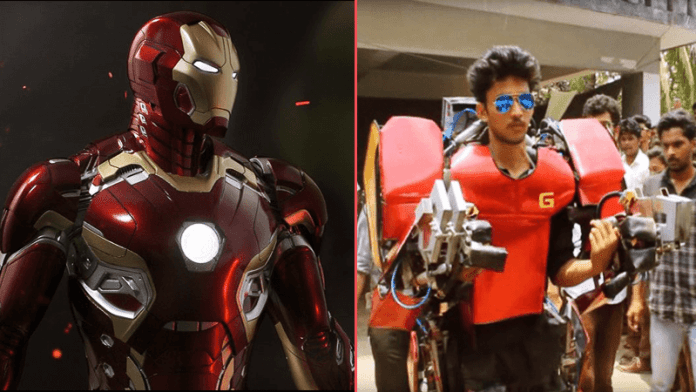Do you love the Iron Man series? If yes, then you must be a huge fan of Tony Stark! However, have you ever thought of making a real-life iron man suit? Actually, Vimal Govin Manikandan and Indian students certainly did.
Indian Engineering Student Builds a Real-Life Iron Man suit for just $750
Vimal Govin Manikandan is a young Indian engineering student of MES College of Engineering in Kerala. He has built a battery-powered real-life Ironman suit using exoskeleton technology.
Let’s know what Exoskeleton technology is? It is a wearable mobile machine powered by a system of motors, pneumatics, levers, hydraulics, or a combination of technologies that allow for limb movement, increased strength, and endurance.
Vimal Govin Manikandan’s new suit weighs around 100KG and can lift to 150KG with the help of battery-powered pressurized air chambers. However, it can’t fly and can hardly walk. However, Vimal and his team managed to develop a unique way to control a robotic suit.
When Vimal Govin Manikandan was asked about the inspiration to build this kind of suit, he said that he was highly inspired by some Hollywood movies like Avatar and Avengers, which show machines specially designed for military use.
Vimal Govin Manikandan has cleared all his motives behind creating this type of suit. He says that he doesn’t have any plans to turn himself into a superhero and even said that the suit might turn to be very useful, mainly in defense.
Vimal said, “Actually, the future of this product is mainly in defense, industrial weight lifting, material handling, etc,” However, this was not his first exoskeleton suit. Vimal and his team managed to build their prototype in 2015, which was much larger than the new one and was mechanically-powered.
It took just $750 to make this impressive exoskeleton suit. However, as we already mentioned, this suit was powered by batteries, the chance that it lasts long is questionable. Vimal and his team are working hard to improve the prototype, especially to fix its walking ability.



